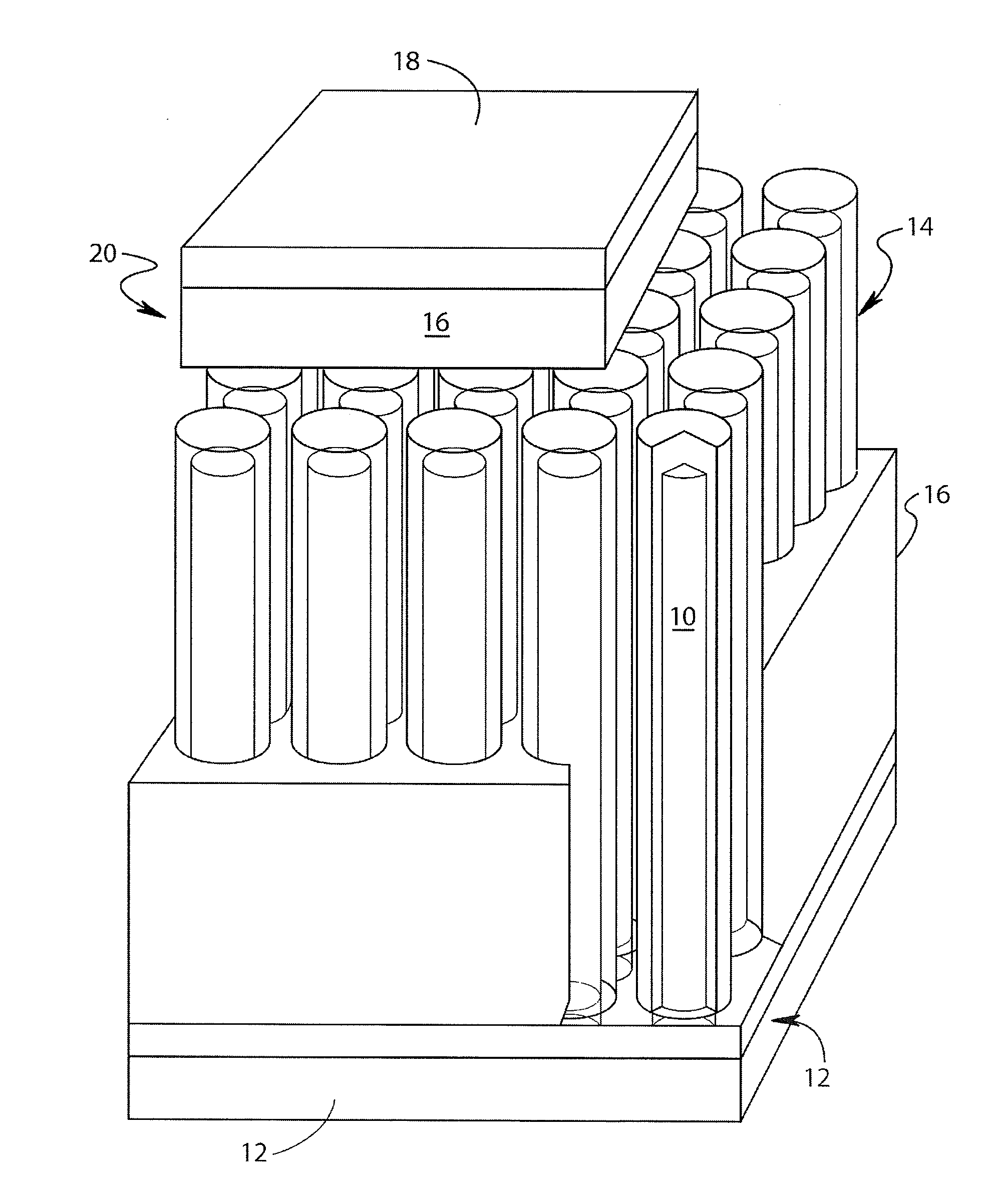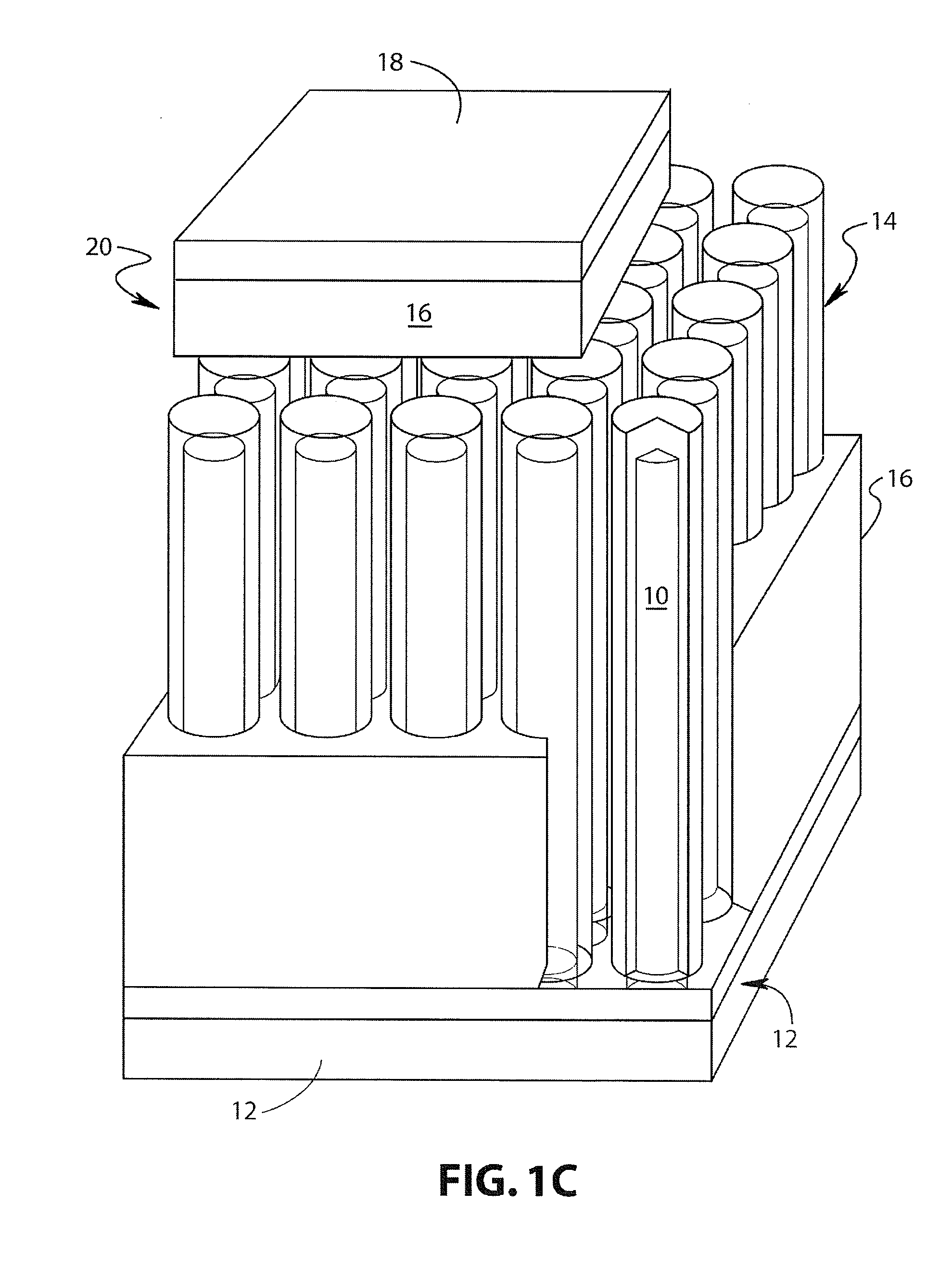Lithium-ion battery
a lithium-ion battery and ion-ion technology, applied in the field of batteries, can solve the problems of slow diffusion between the two electrodes, two principal limitations of the charging and discharging rates of these batteries, and the reversibility of the lithiation reaction is greater, so as to reduce the distance between the li+ ions
- Summary
- Abstract
- Description
- Claims
- Application Information
AI Technical Summary
Benefits of technology
Problems solved by technology
Method used
Image
Examples
example 1
Anode Preparation
[0029]A. Cu2Sb Films:
[0030]The direct electrodeposition of crystalline, stoichiometric Cu2Sb films from aqueous solution at room temperature directly onto copper electrodes at a single potential is first described.
[0031]Cu2Sb films were electrodeposited from aqueous 0.4 M citric acid solutions (denoted H3Cit, 99.5+% Aldrich) containing 0.025 M antimony (III) oxide (Sb2O3, nanopowder, 99.9+% Aldrich), and 0.1 M copper (II) nitrate hemipentahydrate (Cu(NO3)2, 99.9+% Aldrich), prepared by adding the citric acid to Millipore water (18Ω) followed by the addition of Sb2O3. The complete dissolution of the Sb2O3 was aided by mechanical stirring after which the Cu(NO3)2 was added. The pH was then raised to 6 by the addition of 5 M potassium hydroxide (KOH, ACS certified, Fisher). The Cu2Sb films were obtained by performing bulk electrolysis at room temperature at a potential of −1050 mV versus a saturated sodium calomel electrode (SSCE). The temperature and the potential wer...
example 2
Electrolyte I: poly-[Zn(4-vinyl-4′methyl-2,2′-bipyridine)3](PF6)2
[0051]Electropolymerization is an effective method for creating conformal coatings without pinhole defects on high-area electrodes for batteries. The control of the thickness of the polymer layer may create an electrically resistive, ionically conducting barrier suitable for avoiding electrical shorts, inhomogeneous electric fields and inhomogeneous ionic diffusion rates. As will be described in this EXAMPLE 2, the electropolymerization of poly-[Zn(4-vinyl-4′methyl-2,2′-bipyridine)3](PF6)2 results in the conformal coating of high aspect ratio nanowire arrays without the presence of pinhole defects. [Zn(4-vinyl-4′methyl-2,2′-bipyridine)3](PF6)2 was chosen since: (a) the complex's metal-based oxidation, Zn+2 / +3, requires a high potential, making it an alternative to the well-studied redox active ruthenium and osmium analogs; (b) the large electroinactive window of the polymer enables the separation of the electrodes to ...
example 3
Electrolyte II: Acrylates
[0063]The polymer films disclosed herein are useful as solid-state electrolyte materials for use in electrochemical cells, such as lithium-ion batteries. This is largely due to their high ionic conductivity and low electronic conductivity. These films are particularly useful in batteries with very small scale features (such as nanoscale) because they can be conformally deposited using an electroreductive polymerization method. This method results in good uniformity of film thickness without large numbers of pinholes and other defects, making the film of sufficient quality that the film is suitable for application as an electrolyte in a lithium-ion battery.
[0064]Reductive electropolymerization is well-known in the art, including the reductive polymerization of vinyl monomers. The first step in fabricating the films disclosed herein is to electrochemically reduce a vinyl monomer, in particular an acrylate-based monomer (including methacrylates, methacrylic aci...
PUM
| Property | Measurement | Unit |
|---|---|---|
| reduction potentials | aaaaa | aaaaa |
| diameter | aaaaa | aaaaa |
| diameter | aaaaa | aaaaa |
Abstract
Description
Claims
Application Information
 Login to View More
Login to View More - R&D
- Intellectual Property
- Life Sciences
- Materials
- Tech Scout
- Unparalleled Data Quality
- Higher Quality Content
- 60% Fewer Hallucinations
Browse by: Latest US Patents, China's latest patents, Technical Efficacy Thesaurus, Application Domain, Technology Topic, Popular Technical Reports.
© 2025 PatSnap. All rights reserved.Legal|Privacy policy|Modern Slavery Act Transparency Statement|Sitemap|About US| Contact US: help@patsnap.com



